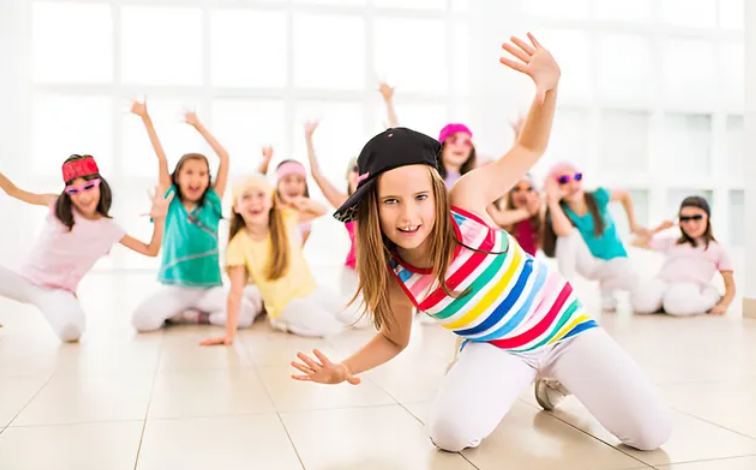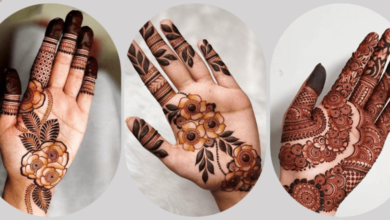What Dancing Teaches Kids About Confidence That School Can’t

Confidence isn’t something kids are born with — it’s something they build through experience. While school plays a big role in shaping how children learn and socialise, it doesn’t always nurture the kind of deep self-belief that comes from expressing themselves freely. That’s where dance steps in.
Dance is more than rhythm, movement, and coordination — it’s one of the most powerful ways for children to learn who they are and how to show it to the world. Whether they’re twirling to ballet music, popping to hip-hop, or performing in front of a crowd, kids discover something that can’t be measured by grades or report cards: genuine, grounded confidence.
Beyond the Classroom: The Power of Expression
Traditional education focuses heavily on academics — reading, writing, and arithmetic — but emotional growth is just as important. Dancing gives children a language that doesn’t rely on words. It lets them communicate emotions, explore creativity, and express parts of themselves that can’t always be explained in a classroom setting.
Studios like Dance on Q understand this balance perfectly. They create environments where children can move freely, make mistakes without judgement, and build pride through practice and performance. Unlike school, where confidence often depends on marks or comparisons, dance nurtures a sense of inner strength that comes from effort, self-expression, and belonging.
Learning to Own the Spotlight
One of the biggest lessons dance teaches is how to handle being seen. For many children, standing in front of others — whether in class, at assembly, or during a school presentation — can feel terrifying. Dance changes that dynamic.
From the very first class, kids learn to perform in front of their peers. They start small: maybe it’s a few steps in front of their teacher or a small group of friends. Over time, those moments build into larger performances — on stage, under lights, with an audience watching. Each time they take that step, they learn that being seen isn’t scary; it’s empowering.
That experience translates to life outside the studio. A child who’s confident enough to perform in front of a crowd becomes the kind of person who can raise their hand in class, speak up in a group, or try new things without fear of judgement.
The Discipline Behind the Confidence
Dance might look effortless on stage, but behind every polished performance are hours of repetition, focus, and hard work. Children quickly learn that improvement doesn’t come overnight — it’s earned through patience and persistence.
Unlike schoolwork, where progress is often measured by tests, dancing rewards consistency. Missing one class might mean losing a rhythm or step, but returning and trying again builds resilience. That process teaches kids that mistakes aren’t failures — they’re simply part of learning.
And when that big performance finally arrives, the applause they receive isn’t just for the choreography — it’s for the dedication, the late rehearsals, and the courage it took to get there.
Teamwork Without the Competition
Confidence isn’t just about standing tall alone; it’s also about knowing how to shine as part of a team. In many dance settings, children learn to synchronise with others, listen, and support their group — without the harsh competitiveness that can sometimes appear in sports or academics.
In a dance troupe, everyone has a role to play. Whether it’s a soloist or someone in the back row, every dancer contributes to the whole picture. Kids quickly realise that their effort matters and that the success of the group depends on everyone working together.
This cooperative confidence — built on teamwork, empathy, and encouragement — teaches kids how to celebrate others’ achievements while still being proud of their own.
See also: Benefits of Saltwater Pool: Why Australian Homeowners Are Making the Switch
Learning to Trust Their Bodies
In a world where children are constantly absorbing outside opinions — from peers, media, and even adults — dance gives them the chance to reconnect with their own bodies in a positive way. They learn balance, coordination, and rhythm, but more importantly, they learn to feel comfortable in their own skin.
Every jump, spin, or stretch reinforces body awareness and self-trust. Kids begin to see their bodies not for how they look, but for what they can do. That shift in perspective can have a lasting effect, especially in the pre-teen and teen years when self-image becomes more complicated.
When a child learns to move confidently — to take up space, to express joy through their body — they’re also learning to appreciate themselves just as they are.
Handling Pressure with Grace
Few things compare to the nerves of stepping onto a stage. The lights, the audience, the music — it can feel overwhelming. But every dancer, no matter how young, learns that courage isn’t the absence of fear; it’s the decision to dance anyway.
This lesson carries over into everyday life. The ability to perform under pressure helps children handle exams, interviews, and unexpected challenges later on. Dance teaches them to prepare, focus, and stay calm when it matters most.
And when things don’t go perfectly — maybe a missed step or a forgotten move — they learn to keep smiling and carry on. That poise under pressure is a lifelong skill that school can rarely replicate.
Building Confidence Through Creativity
While school often rewards getting the “right” answer, dance celebrates individuality. There’s no single correct way to express a rhythm or tell a story through movement. This creative freedom encourages children to experiment, improvise, and discover their own style.
When kids choreograph their own steps or interpret a song in their unique way, they’re developing a sense of self that’s both confident and authentic. They begin to trust their instincts — a skill that helps in every part of life, from solving problems to making decisions.
In a dance environment, mistakes often turn into new moves, and hesitation becomes innovation. That freedom to explore without fear of failure builds confidence that runs deeper than performance — it becomes part of who they are.
Resilience in Every Step
Not every rehearsal goes well. Some days, a child might struggle to master a move or feel frustrated when things don’t click. But dance teaches persistence in a way that’s both gentle and rewarding.
Each setback is a chance to try again. Each success, no matter how small, reinforces the idea that effort pays off. Over time, children begin to internalise this mindset — they don’t give up when things are hard because they’ve seen firsthand that progress comes from practice.
This resilience doesn’t just stay on the dance floor. It spills over into schoolwork, friendships, and sports. Kids who dance learn that confidence isn’t about always being perfect — it’s about knowing you can recover, adapt, and keep moving forward.
The Joy of Belonging
Every child needs a place where they feel they belong — a community that celebrates them for who they are. For many, the dance studio becomes exactly that.
The friendships formed in classes and performances often last for years. Dancers share laughter, nerves, and triumphs together, creating bonds built on shared experiences. Being part of a team where everyone works toward a common goal fosters a sense of belonging that boosts confidence far beyond the studio walls.
When kids feel supported and valued, they naturally become more self-assured. They learn that confidence isn’t about being the best — it’s about feeling safe enough to be yourself.
When the Music Stops, the Confidence Remains
What makes dance so powerful is that its lessons stay with children long after the final bow. The ability to stand tall, speak up, and trust themselves isn’t limited to a stage — it shapes how they face every challenge that comes their way.
While school gives kids the tools to think critically and learn academically, dance gives them something even rarer: the courage to express themselves, to connect with others, and to believe in their own abilities.
So when the music stops and the lights fade, what’s left is something far more valuable than perfect choreography — it’s a quiet, unshakable confidence that will guide them through every stage of life.




